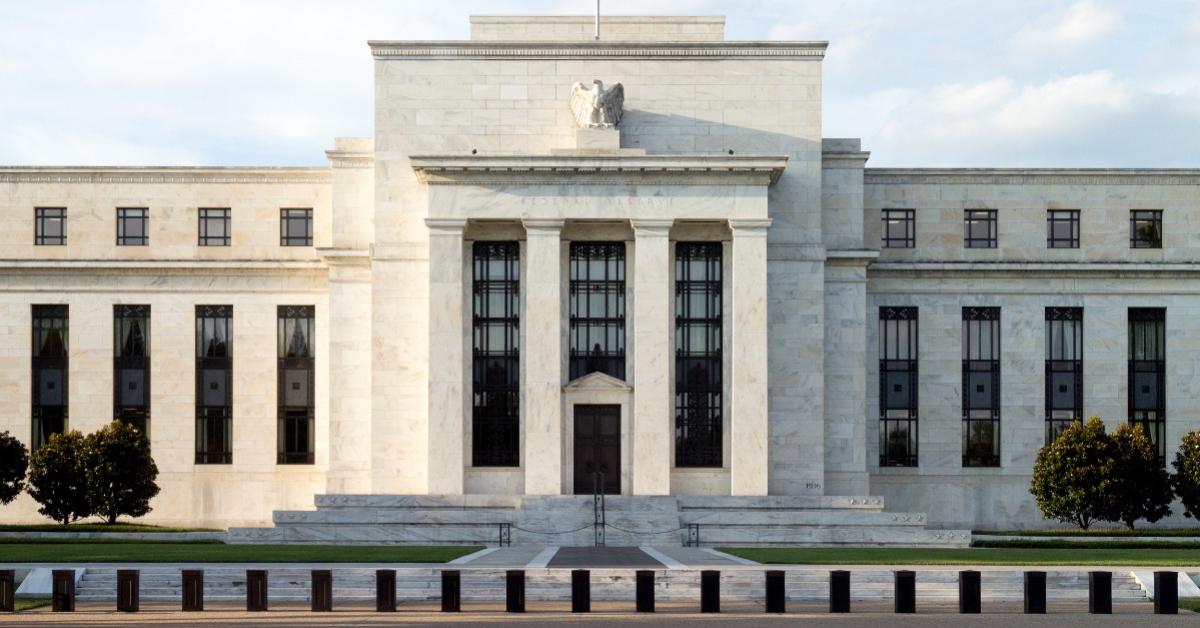
Mainstream analysts seem convinced that global central banks are moving aggressively to tackle inflation, maybe even going too far. After having believed until recently that the spike in prices was only transitionary, central banks insist now that they will restore price stability at almost any cost. In September, the Fed raised its main interest rate to a range between 3 and 3.25 percent from close to zero at the beginning of the year.
Several Federal Open Market Committee members predict that the target policy rate will reach 4.25 percent this year and exceed 4.5 percent in 2023. The Fed chairman also admitted in a hawkish posture that overcoming inflation would not be painless. But would the Fed’s monetary stance be enough to curb the high inflation rate which stood above 8 percent for seven months? Or is the Fed more likely to blink rather than risk a severe economic recession? As stagflation has become a distinct possibility, the Fed’s disinflation scenario looks increasingly implausible.
Inflation Is Primarily a Monetary Phenomenon
The Fed must reduce the growth of the money supply below the growth in output in order to curb inflation. Otherwise, too much money is chasing too few goods, driving up prices. The Fed also needs to keep inflation anticipations anchored, so that a lower demand for cash balances would not increase the speed at which money chases goods, undermining efforts to contain the growth in money aggregates. So far, the Fed has blamed the acceleration of consumer price inflation on supply-side factors: the disruptions of supply chains during the pandemic, followed by the surge in energy prices due to the war in Ukraine.
This is only part of the story because money creation was the main driver of inflation all along. The supply shocks have only exacerbated the flow of printed money into consumer prices rather than into real estate or financial asset bubbles. However, without an excess of money supply relative to output, no supply shock could have led to a general increase in the price level. Indeed, graph 1 shows that since the global financial crisis the increase in M3 broad money outpaced real gross domestic product (GDP) growth at a high rate and recorded a peak during the pandemic. This growth differential is comparable to the one in the 1960s and 1970s.
Graph 1: Broad money versus real GDP growth
picture1.png
Source: FRED.
The increase in broad money has decelerated significantly, to 4.3 percent year over year in August 2022, but it still exceeds the increase in real GDP. The latter slumped as the US entered a technical recession with negative growth in both the first and second quarter of this year. This points to a likely full-fledged recession ahead, which normally should reduce inflationary pressures. It is natural that the large expansion of fiduciary credit in recent years would be followed by a curative recession accompanied by deflation.
According to Ludwig von Mises’s monetary theory of the business cycle, a drop in prices is unavoidable when the inflow of additional fiduciary media stops. Banks are refraining from further credit expansion, either because they cautiously anticipate upcoming bankruptcies or outstanding debts are not paid back. Moreover, uncertainty makes both households and firms increase their cash holdings, while distressed companies are liquidating inventories at fire-sale prices.
In principle, a recession could facilitate the Fed’s task of taming inflation and reduce the need for further substantial interest rate hikes. But this is not consistent with the Fed’s optimistic scenario of an economic soft landing which may trigger another relaxation of monetary policy in order to jumpstart the economy. Moreover, a lasting increase in energy prices, fiscal easing, and a deanchoring of inflation expectations may turn the current recessionary environment into a prolonged stagflation period.
Stagflation Could Derail the Fed’s Benign Scenario
Stagflation in the 1970s came as a surprise to most Keynesian economists because the combination of tepid growth and rapidly rising prices was at odds with previous recessions. It also contradicted the famous Philips curve claiming a stable inverse relationship between inflation and unemployment. The “popular” explanation of the high inflation in the 1970s was the tripling of oil prices following the two oil shocks in 1973 and 1979.
In reality, the surge in inflation was caused by a Keynesian-style fiscal and monetary stimulus that fueled an unsustainable economic boom in the US in the 1960s, as explained by Thornton. This also forced the US to abandon the gold standard in 1971 and led to the collapse of Bretton Woods. Like today, high inflation in the US surging to 6.4 percent in February 1970, predated the energy supply shocks, which was mainly a symptom of excessive money printing. The increase in oil prices impacted inflation differently in various countries, with prices increasing much faster in the US compared to Switzerland and Germany (graph 2), pointing to the key role played by monetary policy and inflation expectations.
Graph 2: Consumer Price Index inflation in the 1970s
picture2.png
Source: FRED.
The German and Swiss central banks understood that inflation was primarily a monetary phenomenon and tried to control the growth in monetary aggregates to restrain inflation and steer inflationary expectations. This became their monetary policy nominal anchor when the link to gold was severed. The Bundesbank hiked interest rates early and ex post real interest rates had been largely positive in Germany, whereas they had been negative in the US the entire period between August 1971 and October 1979. As a result, the growth in the US broad money not only continued at a quick pace (graph 3) but was also accompanied by a deanchoring of inflation expectations as high inflation endured. Even if the increase in the US money supply was only slightly worse than in Germany, the deanchoring of inflation expectations pushed inflation much higher in the US.
Graph 3: Broad money (M3) in the US, Germany, and Switzerland
picture3.png
Source: FRED.
Stagflation Red Flags
The 1970s experience underlines the key role played by inflation expectations in driving up prices. A sustained increase in prices reduces the demand for cash holdings of a currency that is constantly losing its purchasing power, reinforcing the inflationary spiral. Today, we can already see an increase in inflation expectations of both professional forecasters (graph 4) and consumers (graph 5), which may amplify going forward.
Graph 4: Professional forecasters’ inflation projections
picture4.png
Source: Federal Reserve Bank Philadelphia.
Graph 5: Consumers’ inflation projections
picture5.png
Source: New York Fed Survey of Consumer Expectations.
According to Ludwig von Mises, the inflation caused by credit expansion differs from the one caused by direct monetization of government budget deficits. The former is usually accompanied by deflation when the issuance of fiduciary media stops, whereas the latter is not, unless the government withdraws the additional quantity of money from the market.
The current spike in inflation is a mixture of a long-lasting credit boom, supplemented by generous government budget handouts to both businesses and households during the pandemic. Fiscal profligacy has continued after the pandemic with a massive forgiveness of student loans and a “green” electoral spending package which is paradoxically meant to reduce inflation. Fiscal easing is likely to counteract deflationary pressures stemming from ending the credit expansion, as budget deficits have reached warlike levels peaking at almost 15 percent of GDP in 2020.
Energy prices will most likely remain high as the war in Ukraine and the decoupling from the Russian economy continue, reinforced by the unabated green transition. This pushes governments to accommodate the energy supply shock with further rounds of monetized deficit spending to subsidize energy prices and increase public sector wages and incomes. Growth of private wages has also accelerated in a tight labor market where anticipations of persistent inflation are taking hold (graph 6). Lately, both the ECB and the IMF expressed concerns that inflation has started to become “self-reinforcing” due to governments’ fiscal packages and an increase in inflation expectations.
Graph 6: US nominal wages
picture6.png
Source: FRED.
The Fed’s Monetary Stance Is Too Lax
With prospects of stagflation materializing, the Fed’s current scenario of monetary tightening is obviously too dovish. History shows that the US Great Inflation of the 1970s could only be ended by hiking interest rates into real positive territory for several years in order to reanchor inflation expectations. Inflation had accelerated to almost 12 percent when Volcker took over as Fed chairman in November 1979.
At that time, the Fed rate was still relatively high, and the real rate was only slightly negative at –0.8 percent. Yet, with inflation accelerating above 14 percent by mid-June 1980, Volcker raised the Fed rate up to 19 percent in December 1980. While he gradually reduced the policy rate over the next five years, the real rate was always positive and exceeded 5 percent on average from 1981 to 1984, so that inflation dropped below 4 percent (graph 7).
The rate tightening also triggered a steep economic recession in 1981–82 and the wiping out of the savings and loan industry. With current negative real rate rates exceeding –5 percent and voices already calling for a softening of the Fed’s stance in the new recessionary environment, the US will most likely end up with stagflation rather than low inflation.
The financial sector could throw some sand into the printing machine by being extra cautious and tightening lending conditions more than the Fed. Indeed, the spread between the 30 Year fixed mortgage rate and the Federal funds rate increased from an average of 275 basis points in 2020 to 385 basis points in the first nine months of 2022, but the financial sector tightening made up only partly for the Fed’s too lax monetary stance.
Graph 7: Federal Funds rate and inflation





